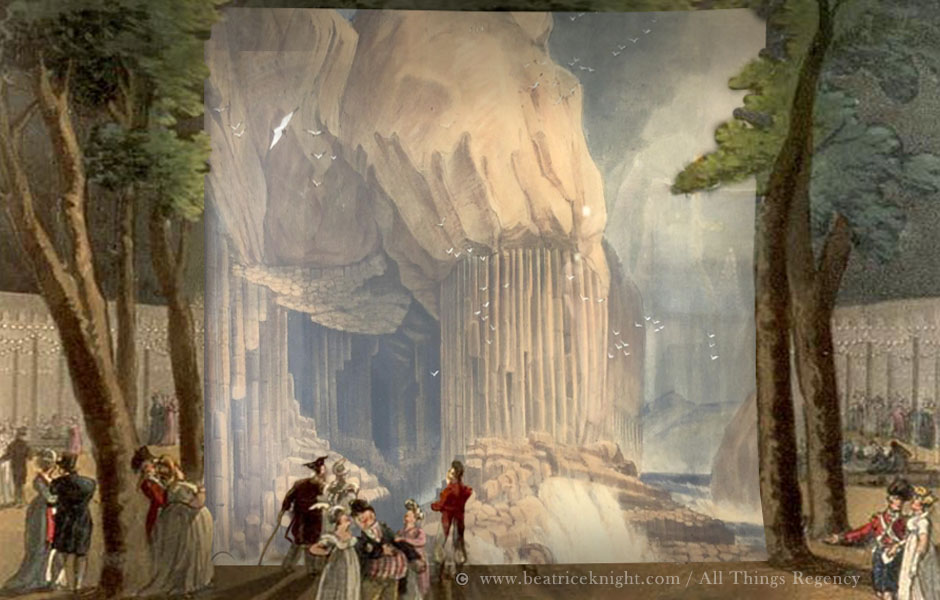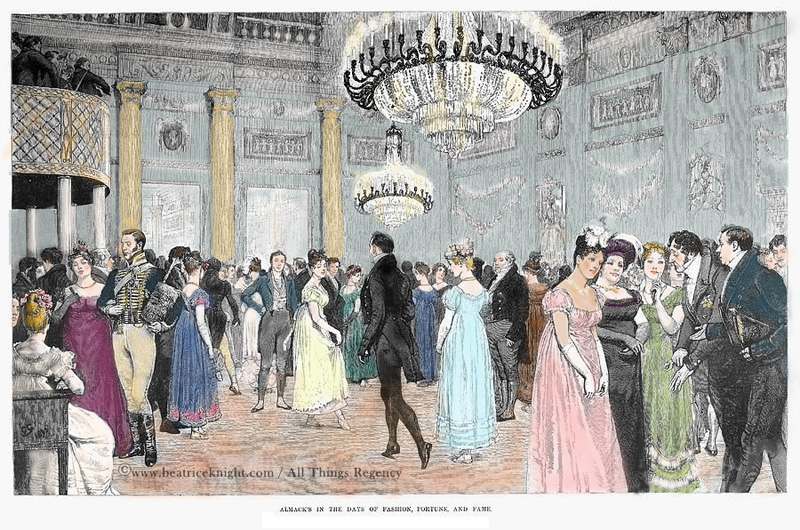
With servants’ wages due on the quarter days, hiring fairs at Michaelmas, and the family gallivanting to London for the Season then planning the Harvest Home at their country seats, the Regency housekeeper had to keep a close eye on the calendar.
The Regency Calendar
In England and Wales, the Regency calendar was divided by four ‘quarter days’ corresponding roughly to the seasons. These are the quarter days referred to in most Regency-set novels. In Scotland and some areas of Northern England, the Celtic calendar was used, with the quarter days: Candlemas, Whitsunday, Lammas, and Martinmas. In England, these were known as the cross-quarter days.
| Month | Event | English |
|---|---|---|
| January | 1st – New Year’s Day. The carry over from New Year’s Eve parties, New Year’s Day itself was not a big celebration in Regency years, but visits that began on New Year’s Eve could continue on into the day. Jan 1st was also the cut-off date, give or take a few for late delivery, for application to be made to the Lord Chamberlain for a lady of the upper crust to present a daughter or young relative at court in the coming Season.
5th – Twelfth Night. Marking the end of the Christmas season, Twelfth Night was celebrated with parties, games, a good deal of wassail punch, and a special cake as the centerpiece. Christmas greenery was taken down and burned. 18th – Queen’s birthday. The pheasant hunting season ended in January. |
|
| February | 1st – Imbolc. According to the much older (more pagan) Scottish calendar, winter ended and light returned on 1st of February, which was celebrated as Brigid’s day.
2nd – Candlemas. Known as a cross-quarter day in England, Candlemas was one of the original quarter days on the Scottish calendar. During the Regency years, the London Season, epicenter of the beau monde’s marriage market, started gearing up in February, with newspapers recording a massive uptick in what they termed “fashionable arrivals.” This timeline differed from earlier years when travel was more of an ordeal and fashionable people used to remain in London for the entire duration of the parliamentary session, usually from November to June. In 1813, the Prince Regent held a much-vaunted Ball and Supper at Carlton House on February to get things rolling. |
Cross-quarter Day |
| March | 21st – Equinox, according to the Ecclesiastical calendar.
25th – Lady Day. Falling on the Feast of the Annunciation, Lady Day was legally New Year’s Day in England until 1752. For that reason, it remained the date when wages and rents paid annually fell due. It was a big day for “hiring fairs” like the one illustrated above, where domestic staff could be hired. Easter – falling 7 days after the Paschal Full Moon, Easter Sunday dates change from year to year. During the Regency era, Easter Sunday fell during March in these years: 1807, 1812, 1815, 1818, 1823, 1826, 1834. |
Quarter Day |
| April | Easter Sunday fell in early April during most Regency years, and the London Season went full throttle from Easter onward. Through the month, the queen would periodically hold a “Drawing Room” and ball at St. James palace, where young ladies could make their curtsey to her. The king usually held an evening levee the same week, where various appointees in his service were presented. | |
| May | 1st – May Day / Beltane. Throughout England, May Day traditions, marking the mid-point of Spring, were deeply rooted in communities, many dating back centuries. Wells were dressed in some locales, and fairs held, where “Maying” – including dancing around Maypoles – was a good opportunity for couples to meet up and court at public celebrations. The Celtic festival of Beltane coincides.
15th – Whitsunday. Feast of the Holy Spirit, a Scottish quarter day, and a cross-quarter in England. |
Cross-quarter Day |
| June | As June began, the Bath Season came to an end.
4th June- King’s birthday. Also Fourth of June at Eton, a day open to parents and friends established by Headmaster Keane, and not necessarily held on the 4th, but thereabouts. 25th – Midsummer. This quarter day fell on the Feast of St. John the Baptist, in the middle of the growing season, just after the solstice. The London Season was at its peak during June, with the King’s birthday balls and festivities, the races at Ascot, exhibitions, opera, Vauxhall Gardens picnics, and a succession of glittering parties and balls. |
Quarter Day |
| July | Parliament adjourned in July through most of the Regency era, and the Royal Family left town at more or less the same time. Their departure tacitly signaled an end to the Season, and the haut ton migrated to spa towns or travels abroad, then adjourned to their country seats for the hunting. | |
| August | 1st – Lammas. A quarter day on the Scottish calendar, Lammas marked the beginning of the harvest in many locations.
12th – Grouse shooting season begins, on the date determined by the 1831 Game Act – prior to the Act, the first week of August usually saw the Regency elite preparing for their sport in stately homes around Britain, and some would start shooting grouse a tad sooner than ideal for conservation. The Act attempted to protect numbers by fixing a date. |
|
| September | 29th – Michaelmas. The feast of St. Michael was, with Lady’s Day, one of the most important quarter days of the Regency. It signified harvest’s end and the beginning of a new farming year. Harvest Home festivals were celebrated all over England on various dates from August through October, according to local traditions. The Michaelmas dinner usually included roast goose and a blackberry pie. | Quarter Day |
| October | 1st – Pheasant hunting season opens, as does the Bath Season, with subscription balls on Mondays and Thursdays at the Upper Assembly Rooms – the season ran until early June.
31st – Samhain. Starting with bonfires on the night of the 31st, this ancient Gaelic festival rolled over into November 1st. After the hunting, the royals usually returned to London and remained until Christmas, drawing many fashionable people back to town with them. |
|
| November | 1st – All Hallows Day.
5th – Guy Fawkes Day. Also known as Bonfire Day, this event celebrates the so-called Gunpowder Plot of 1605, when Guy Fawkes and fellow-conspirators attempted to blow up the Houses of Parliament and install Catholic rule. An effigy known as “Guy” was usually burned. 11th – Martinmas. The feast of St Martin was a Scottish quarter day and an English cross-quarter. In Scottish lore the ghosts of the dead returned to their homes at Martinmas. In England, it was associated with slaughter – farm animals being processed for meat over winter. Fox hunting started in November and ran through to March. November was also occupied with country balls. |
Cross-quarter Day |
| December | 25th – Christmas Day. During the Regency era, Christmas was a festive time. Jane Austen wrote of company about a roaring fire and general gaiety. Homes were decorated with greenery, kissing boughs, a Yule log, and sometimes a Christmas tree (a German custom introduced by Queen Charlotte around 1800.)
26th – Boxing Day. Also St. Stephen’s Day, this was often a servant’s day off, and a day when they might receive a gift box from their employer. It was a day to show charity. Alms collected at churches were distributed to the needy and the gentry would often give gifts or a cash bonus to tenants and workers. 31st – Hogmanay – the Scottish New Year’s Eve kicked off two days of celebrations starting with a candlelight parade, a dance, feasting on haggis and “first-footing” (setting foot across the threshold) friends and family with gifts at midnight, to bring luck as the first visitors of the new year. This celebration remains just as popular as ever. |
Quarter Day |



